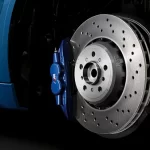Petrol vs Diesel engines: A comparison – Basic difference between a petrol engine and a diesel engine based on working, pressures, combustion, compression ratios, speed, efficiency, maintenance, and running costs. The following points are important for the comparison of petrol and diesel engines:
| SN | Petrol Engines | Diesel Engines |
| 1. | A petrol engine draws a mixture of petrol and air during suction stroke. | A diesel engine draws only air during suction stroke. |
| 2. | The carburetor is employed to mix air and petrol in the required proportion and to supply it to the engine during suction stroke. | The injector or atomiser is employed to inject the fuel at the end of compression stroke. |
| 3. | The pressure at the end of compression is about 10 bar. | The pressure at the end of compression is about 35 bar. |
| 4. | The charge (i.e. petrol and air mixture) is ignited with the help of a spark plug. | The fuel is injected in the form of fine spray. The temperature of the compressed air (about 600° C at a pressure of about 35 bar) is sufficiently high to ignite the fuel. |
| 5. | The combustion of fuel takes place approximately at constant volume. In other words, it works on Otto cycle. | The combustion of fuel takes place approximately at constant pressure. In other words, it works on Diesel cycle. |
| 6. | A petrol engine has compression ratio approximately from 6 to 10. | A diesel engine has compression ratio approximately from 15 to 25. |
| 7. | The starting is easy due to low compression ration. | The starting is little difficult due to high compression ratio. |
| 8. | As the compression ratio is low, the petrol engines are lighter and cheaper. | As the compression ratio is high, the diesel engines are heavier and costlier. |
| 9. | The running cost of petrol engines is high because of higher cost of petrol. | The running cost of diesel engines is low because of the lower cost of diesel. |
| 10. | The maintenance cost is less. | The maintenance cost is more. |
| 11. | The thermal efficiency is upto about 26%. | The thermal efficiency is upto about 40%. |
| 12. | Overheating trouble is more due to low thermal efficiency. | Overheating trouble is less due to high thermal efficiency. |
| 13. | These are high speed engines. | These are relatively low speed engines. |
| 14. | The petrol engines are generally employed in light duty vehicles such as scooters, motorcycles, cars. These are also used in aeroplanes. | The diesel engines are generally employed in heavy duty vehicles such as buses, trucks and earth moving machines etc. |


